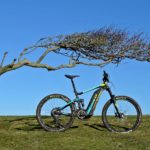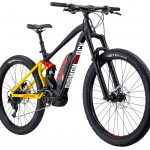You could take a massive powerful motor that gives power all the way to 200rpm, then control it down to fit that Bosch curve. The Bosch motor isn't a massive powerful motor. It's a tiny 250w motor, probably already running close to it's maximum.
Well, yes, you probably wouldn't describe it as a 'massive powerful motor'. But it doesn't seem to be particularly 'tiny' either when compared to other offerings, and if my understanding is correct, the internal gearing is such that it runs at something like 2.5 times the rotational speed of say the yamaha motor. How this design decision affects the relative power delivery, is yet another mystery that I need to investigate! but I imagine they did it for a very good reason.
Why would you want to run it past 120 rpm, when most people can't pedal that fast?
I imagine cycling at >120 rpm is not needed. However my interest in this topic has been vastly increased because a couple of days ago, the wife (yamaha) and I (bosch) went out for a ride, and I could not understand how she was struggling so much at certain points when at other times, she was doing so well. So the next day, we repeated the route, but we swapped bikes. I had a real eyeopener when I started to experiment with cycling at different cadences in real life hilly terrain.
Basically, I'd say that the performance of the Yamaha motor followed almost exactly the curve depicted in the graph shown in this thread. I was shocked at how the power fell off to virtually nothing (and really quickly!) once you went up to around 100rpm - and this is NOT a particularly unreachable figure. Its well within what keen cyclists would class a normal operating range, especially for a burst now and again.
I felt really guilty as I'd been advising her to increase her cadence, but I had no idea what bad advice this could be with the Yamaha motor! I'd never experienced this with my Bosch, and when we swapped bikes and she rode mine, she flew up the areas that she previously struggled with (when going for a high cadence).
I'd seen some people mention how the Bosch system allowed a higher cadence range, but I'm a bit gobsmacked as to how little seems to be discussed as to how nasty a steep power falloff can be. For people tootling around at 60rpm or so, its probably no big deal, but for some people who want to ride their ebikes in the same basic style as their non powered bikes, that could be a huge consideration.








